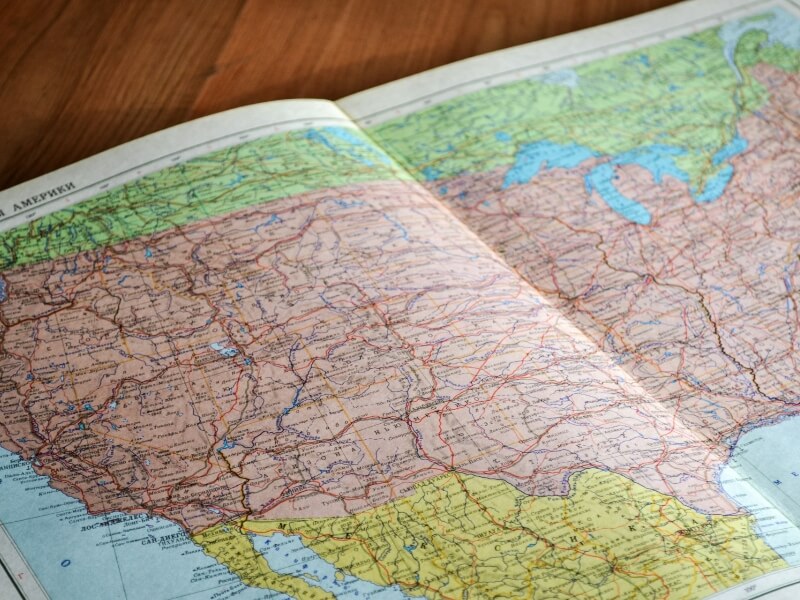SDN has moved!
Subscribe to our new @SurvivalDispatchNews YouTube channel
When an SHTF scenario arrives, your location significantly determines your chances of survival. Some areas of the United States are more desirable than others for staying safe and accumulating resources. Where are the most dangerous places to be when it starts going downhill?
Here are the seven states you want to avoid.
1. New Jersey
Preppers should avoid densely populated areas in dangerous situations because of the potential for crime. New Jersey tops the density list with 1,259 people per square mile and 9.6 million overall. While some areas could work, New Jersey would have too many people fighting for resources. The last thing you want is to battle the desperate people from New York City.
Another reason New Jersey would be dangerous is its geographical location. The Atlantic Coast makes the Garden State vulnerable to hurricanes, as seen with Hurricane Sandy in 2012. Southern New Jersey has the Wharton State Forest, but there’s insufficient rural farmland for growing crops.
2. Rhode Island
Farmland is a significant concern for Rhode Island because of its scarcity. The state only has 60,000 acres, and it’s easy to imagine the dense population fighting over it. Your survival chances are better in places with abundant natural resources and fewer people to combat.
3. Arizona
The West has some promising states for SHTF scenarios, but Arizona would be dangerous for long-term survival. High temperatures make it difficult in the summer, so air conditioning is necessary. However, a grid-down situation could make living conditions harder. Preppers could use sunlight and solar panels, but water access could be challenging.
Arizona is one of the driest states, with only 12 inches of precipitation annually. The lack of rainfall doesn’t bode well for preppers who want to develop farmland and grow crops. Arizonans grow peppers, corn and tomatoes, but you need regular access to water. Unfortunately, you’ll have to fight other residents for this resource from the Colorado River.
4. Florida
Another liability in Florida is the population density. The state is large but has metropolitan areas spread throughout. If evacuation is necessary, you’ll get stuck in traffic with drivers from Orlando, Tampa and Miami. Florida is dangerous for drivers, with the state reporting over 3,100 vehicle deaths in 2018.
5. Louisiana
Louisiana is another state vulnerable to natural disasters. The Pelican State challenges preppers because much of it is at or below sea level. Hurricane Katrina in 2005 demonstrated Louisiana is susceptible to natural disasters, making each hurricane season dangerous. Your access to resources would be below par here, so consider other options for SHTF survival.
The state also poses a danger through crime rates. New Orleans is the primary location for resources but is a liability due to violent crime. City officials say the homicide rate is 111% higher now than it was in 2019, making the location undesirable for safety. You may find a decent area close to Texas or Arkansas, but Louisiana is too dangerous for most preppers.
6. New York
Preppers should also consider state laws when finding somewhere to shelter. New York has strict gun laws, requiring a pistol permit before you can legally own a handgun. The paperwork and waiting could be a liability once SHTF situations arise. New York could also be dangerous because of its harsh winters, with the state seeing frequent blizzards.
7. California
Much of the Golden State boasts mild weather, making it ideal for farmland. However, precipitation and water access are unreliable in California. Experts say 1 million residents lack safe drinking water, thus increasing their risk for diseases. A dense population, unreliable water and strict gun laws make California one of the worst locations for preppers.
Avoiding the Dangerous States in SHTF Scenarios
While the best region depends on the circumstances, some parts of the United States are safer than others. Farmland and abundant rural areas make the Midwest and Great Plains more attractive. However, these seven states offer inadequate resources, threatening weather and dangerous cities, so preppers should steer clear.
=====
Become a Survival Dispatch Insider …
We bring together survival enthusiasts and preppers to share skills and knowledge, so you can enhance your preparedness for emergencies and ensure the safety of you and your community.
The Results You’ll Get …
Our community, courses, and memberships are pretty special. We focus on the ways it will make a huge difference in your life.
Here are a few of the things you’ll be able to do as a member of Survival Dispatch Insider …
1) Improve your emergency preparedness by learning survival skills and strategies from experienced preppers.
2) Build lasting connections with like-minded individuals that share your passion for safety and readiness.
3) Access a wealth of knowledge and resources to assist in protecting you and your community during unexpected situations.
Click HERE to get started.
=====


